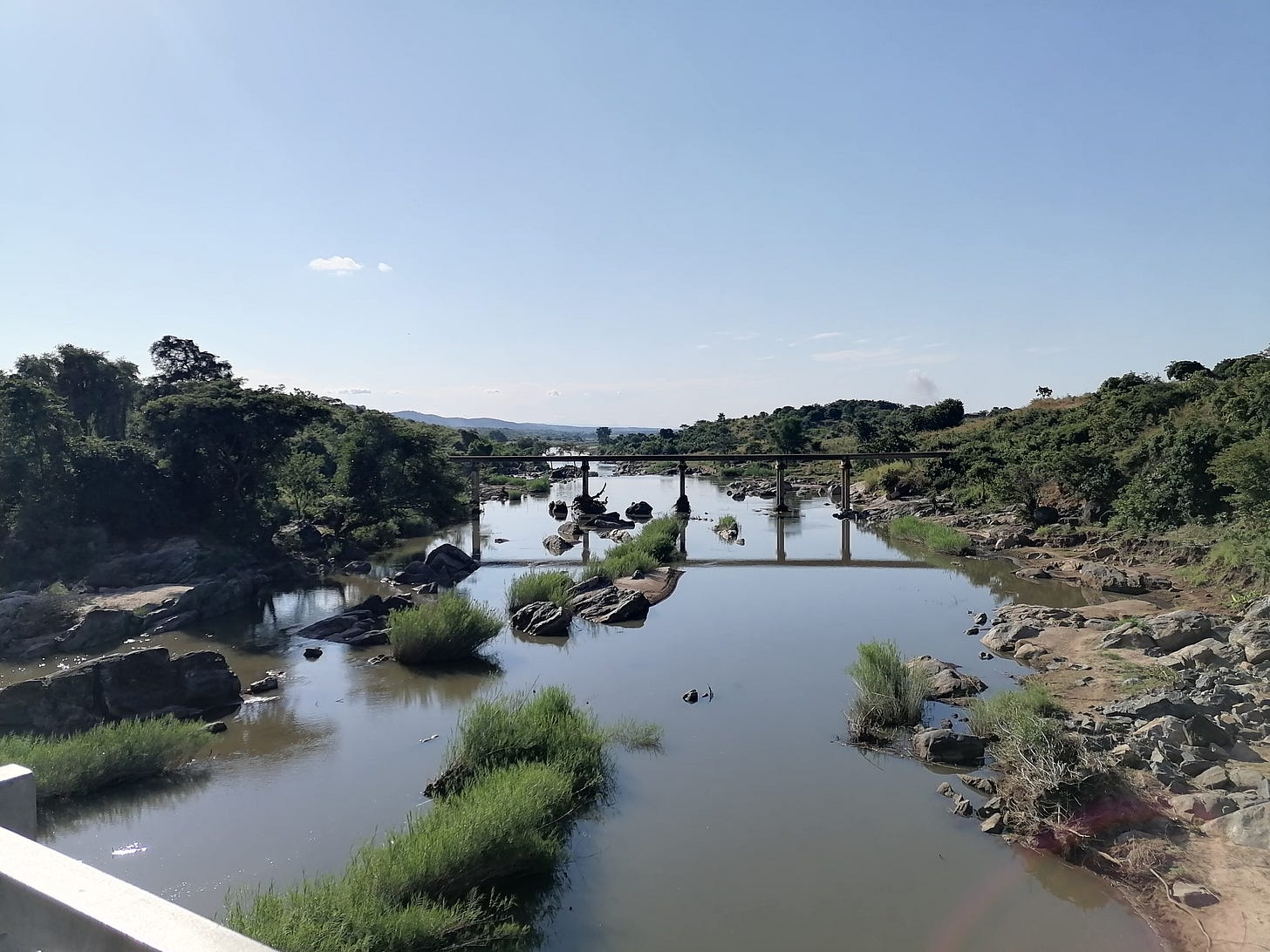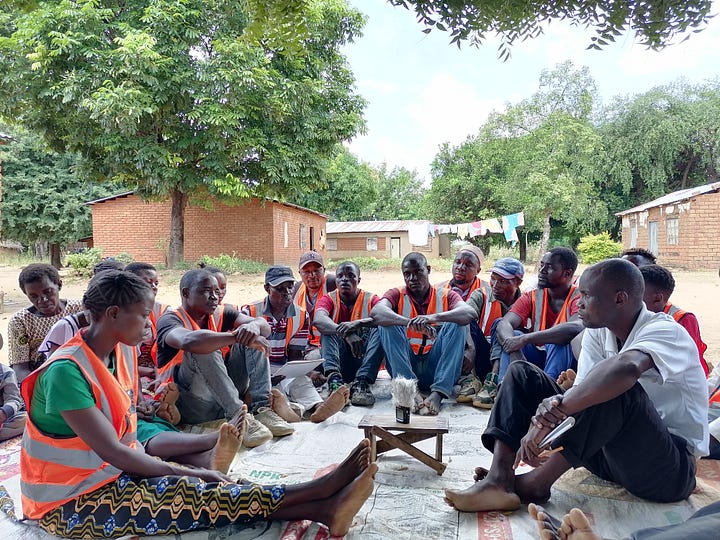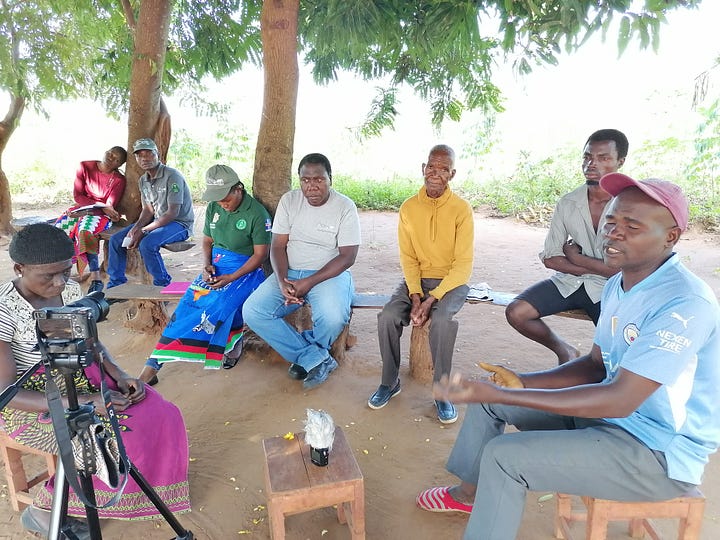FEATURE - Conserve Bua River to Sustain Millions Along Its Course
Conservation efforts, sustainable land management, and community engagement are key to securing Bua River’s future. By taking action now, we can safeguard this precious resource for generations.

BUA, Nkhotakota, Malawi (Planet Defence) - Located between Ndawambe and Sitolo villages in Traditional Authority Mlonyeni, Mchinji Forest Reserve is home to the mighty Bua River, which emerges from underground before embarking on a 250-kilometer journey. This vital waterway winds through Lilongwe, Kasungu, Dowa, Ntchisi, and Nkhotakota before entering a protected area and eventually emptying into Lake Malawi.
For centuries, Bua River has provided essential ecosystem services to millions of people along its course. It supports livelihoods through agriculture—particularly cereal farming—eco-tourism, and as a breeding ground for the prized Lake Salmon, locally known as Mpasa. However, recent assessments reveal severe catchment degradation at its source, threatening the sustainability of these benefits for downstream communities.
The river's source is under increasing strain due to encroachment and large-scale irrigation, which disrupt the underground recharge rate. These challenges are compounded by the effects of climate change. Fortune Mwafulirwa, the District Forestry Officer, laments the rampant deforestation driven by illegal charcoal production.
“In addition to the degradation challenges, there are insufficient partners actively participating in ecosystem restoration efforts. We hope the government will increase funding for law enforcement operations to address this issue,” Mwafulirwa stated.
Local residents recall a time when the Bua River was well-buffered by grass, reeds, and trees, which maintained steady water flow, preserved fish spawning grounds, and ensured harmony between human settlements and the ecosystem.
“The river used to be well-protected, allowing it to flow within its course without obstruction. This meant water quality was maintained, fish populations thrived, and communities lived in balance with nature,” explained Nundwe Nkhata, Chairperson of the Katimbira Village Development Committee in Nkhotakota District.
“The cultivation of the river’s buffer zone has left it exposed and more vulnerable to degradation. This affects water conservation and catchment management,” Nkhata added. “This is why we have formed the Katimbira Village Development Committee, which now collaborates with the Mlawanya Riverine Committee to sustainably manage the Bua River.”
As the Bua River nears Lake Malawi in Nkhotakota, a weir constructed in 2005 for irrigation purposes highlights the river’s essential ecosystem services. However, due to fluctuating water levels, the river dried up completely in 2014, according to district irrigation records.
The weir, designed with fish ladders, was intended to facilitate the migration of Mpasa from the lake to its spawning grounds. This endemic species requires clean gravel surfaces for reproduction, which are only available in the Nkhotakota Wildlife Reserve, a protected area. With growing interest in irrigation, fisheries, and environmental conservation, a collaborative approach became necessary to address these competing needs.
Symon Ngwira, the District Fisheries Officer for Nkhotakota, emphasizes the importance of improving the fish ladders.
“Enhancing the current fish ladders or constructing new ones would allow Mpasa and Sanjika species to complete their migratory cycle. Adults could move upstream freely, while juveniles could safely swim downstream to the lake, increasing fish biodiversity,” Ngwira stated after a stakeholders' meeting.
Vincent Sitima Phiri, the Senior Irrigation Engineer and Nkhotakota District Irrigation Officer, highlighted the importance of balancing irrigation and conservation needs.
“The weir was designed to divert water to Bua Irrigation Scheme, which has the potential to cultivate 365 hectares of land, benefiting 900 farming households. However, the fish ladders need urgent modifications to prevent juvenile fish from being diverted into irrigation canals, where they perish,” Phiri explained.
He noted that experts are exploring ways to ensure juveniles can navigate the ladders and return to the lake instead of being trapped in irrigation channels. “Initially, the design included sluice gates, but over time, these were either stolen or washed away. We need to work collaboratively to find a solution that benefits both agriculture and fisheries.”
David Nangoma, Park Manager of Nkhotakota Wildlife Reserve, underscores the river’s ecological significance.
“Bua River provides a critical spawning area for Mpasa fish. The section within the reserve offers clean sand beds essential for egg-laying and fingerling growth before they migrate downstream,” Nangoma explained.
Traditional Authority Mphonde supports the multi-stakeholder approach, emphasizing the importance of integrating technical expertise to ensure both irrigation and Mpasa conservation efforts succeed.
“In the past, Mpasa was abundantly sold along the roadside, but fish populations have declined due to reduced water levels and catchment degradation. I believe that bringing together experts from different fields will create a sustainable solution that benefits both irrigation and fisheries conservation,” Mphonde stated during a site visit at the weir.




The degradation of the Bua River catchment poses a significant threat to livelihoods, biodiversity, and the broader ecosystem. However, a collaborative approach involving government agencies, conservationists, local communities, and other stakeholders can help restore the river’s health. Ensuring sustainable management of this vital waterway is crucial—not just for today’s generation but for those to come.
Mchinji Forest Reserve serves as the primary water source for the Bua River, along with several other streams, including Ludzi, Liwerezi, Lusa, and Matizi, which originate from the forest. Additionally, the reserve hosts mobile service provider towers, various institutional facilities, cultural heritage sites, and tourist attractions. As a critical catchment area, it plays a vital role in water abstraction for the district. The Central Region Water Board extracts water from the reserve through a gravity-fed system to supply Mchinji Boma and surrounding areas.
The three year Effective Management of Mchinji Ecosystems for the Restoration of the Upper Bua River Catchment project, supported by the Global Environmental Facility (GEF) Trust Fund, aims to enhance the conservation of ecosystems that provide essential goods and services to rural communities within the Bua River Basin. The project’s objective is to strengthen the management of forest ecological and biological resources, ensuring the continued supply of key ecosystem services while contributing to the restoration of the Bua River ecosystem and promoting sustainable livelihoods for surrounding communities.



